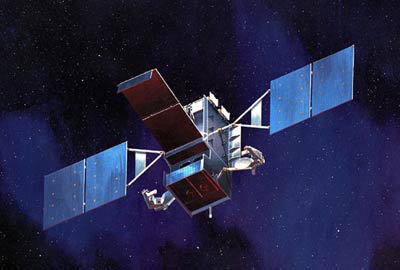Changing the decor in the theater of space warfareby Taylor Dinerman
|
| The Outer Space Treaty may prohibit certain types of military activity of the Moon, but that is not to going to stop the place from being used for all sorts of quasi-military roles. |
Proposals to use the surface of the Moon for a set of observatories that will both look outwards towards the rest of the solar system and inwards towards the Earth have a definite paramilitary aspect. The size of the apertures that can be created on the Moon are huge and they could produce sets of detailed environmental data that would be extremely valuable for military purposes. Such observatories would be under civilian control, but the products of their observations would be controlled by the nation or nations that built them and thus available for military purposes, just like data from environmental satellites in LEO.
In the area Collins calls “the Moon and its environs”, also sometimes referred to as “cislunar space”, there are the Lagrange points. So far there has not been any serious known plan to use these for military purposes, but there has been speculation over the years that these could become bases for space surveillance systems or even for space control weapons. The stable L-4 and L-5 points might be especially useful for these roles, but, on the other hand, these locations are so well known that any military spacecraft or facility placed there would lack any camouflage whatsoever.
The nature of the new generation of US and foreign “non-kinetic” space weapons is already changing the nature of space warfare. There are basically three types of these weapons: jammers, such at the counter-communications device that the US currently has; disablers, such as medium- or high-powered lasers or high-powered microwaves (HPM) that can disable a target spacecraft; and electromagnetic pulse (EMP) weapons. These last types of weapons are not strictly space weapons since they could also disable electronic systems over large swaths of the Earth as well as knocking out any satellites within range. Since EMP weapons are powered by nuclear explosions they can be classified as weapons of last resort. Any state that used them would have to expect a nuclear response.
It is the question of range that determines the new shape of the theater of space operations. Expensive and delicate surveillance satellites in LEO, such at the US KH-12 series, are vulnerable to laser or HPM attack, yet they need to fly relative low in order to get the best resolution for their optical systems. The same holds true for radar imaging satellites. Protecting these satellites from kinetic and non-kinetic attack is a difficult problem: it requires them to have plenty of propellant to maneuver out of the way of “normal” ASATs and to carry shielding of various kinds that will be effective against lasers and HPMs. Such defenses will inevitably degrade the performance of these spacecraft or, if ignored, will make them into strictly peacetime assets.
Navigation and communications satellites in higher orbits, including GEO, may be vulnerable to the same laser and HPM weapons, but obviously it will be more difficult for Earth-based beams to maintain their coherence at such ranges. If the beams were to come from laser- or HPM-equipped satellites then it will be more difficult to defend these craft, but the platforms for such weapons would themselves be targets.
| In space warfare, it must be assumed that some satellites and spacecraft are going to be destroyed by the enemy. Therefore, it is simply prudent to have reserves in place. |
In the future it may be that the US and other space powers will try to hide both operational and reserve satellites in cislunar space or beyond. Using complex orbits that depend on minute changes in the gravitational environment, such steathly satellites could remain undetected for many years. They would have to use nuclear power since solar arrays have an easily identified signature. They would also have to use “extremely low probability of intercept” communications. Another requirement is that they have a powerful “dash” capability to be able to change orbits quickly in response to a crisis.
Another new factor is the need for a new kind of space navigation system. GPS, and later Galileo, will not be all that useful in GEO orbit or beyond, and the current generation of star trackers, though obviously pretty good, represent what engineers call a “single point failure”. One alternative is to find a way to use the sixteen or so powerful pulsars that are easily detectable from our solar system as a sort of natural space GPS.
In space warfare, it must be assumed that some satellites and spacecraft are going to be destroyed by the enemy. Therefore, it is simply prudent to have reserves in place. So far the GPS system is the only military asset with any significant on-orbit reserves. In the near future the US is going to have to start planning to hide some reserve satellites in cislunar space or even in the “outer envelope” of the Earth-Moon system. Reconstituting a satellite network after an attack will be a lot faster if there are spares already in orbit that can be moved into an operationally suitable position when needed. This may be one answer, among others, to the question of what are “Operationally Responsive” space activities.
